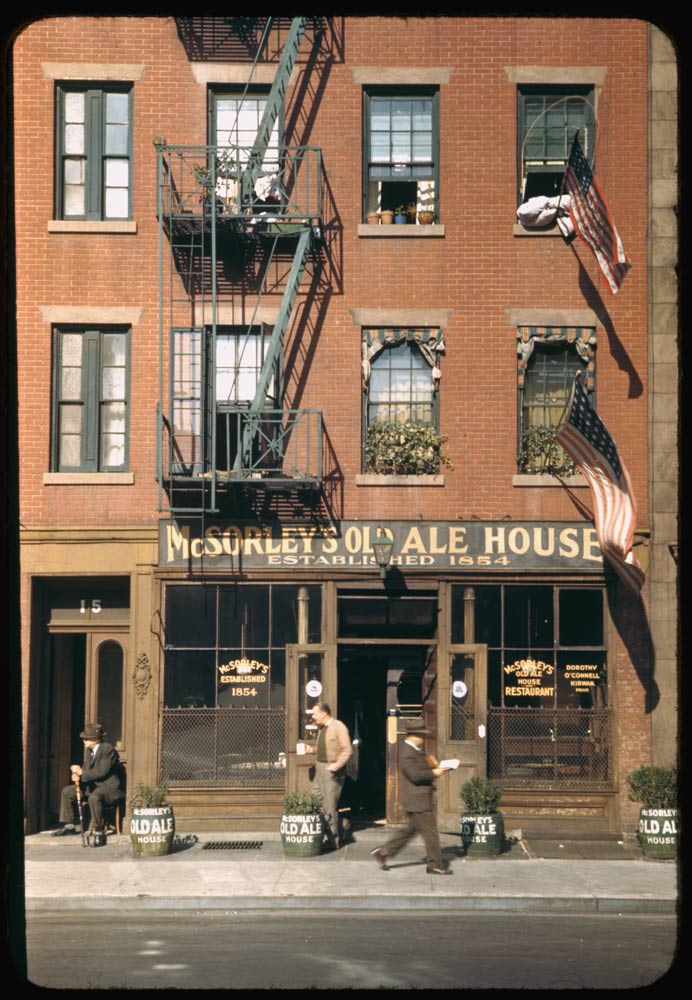Mitchell’s McSorley’s in Color
Jen Carlson at Gothamist has gathered 40 color photos of New York City in the 1940s from a trove of Charles W. Cushman’s collection, digitized and maintained by Indiana University. It’s an incredible collection.
One thing about the city that’s always mystified me is how it manages to always feel like New York, even across time. The skyline and the fashions have changed, but in general it looks exactly like the place I called home for six years.
One of my favorite photos in the collection is this one of McSorley’s Old Ale House:

East 7th St. between 3rd and 2nd Ave. by Charles W. Cushman
I’ve mentioned McSorley’s here once before, two and a half years ago, in a story about accidentally taking Brett Terpstra and a co-worker there. In retrospect my writing is a bit embarrassing:
I took them to McSorley’s Old Ale House, something of a tourist trap with sawdust on the floor that only serves small glasses of their house beer. It was a bit of a mistake on my part but we got a round and got to talking.
Earlier this year I finally picked up Joseph Mitchell’s Up in the Old Hotel, a collection of the writer’s profiles from The New Yorker. I had been meaning to read it for years, ever since John Gruber and Glenn Fleishman discussed it on The Talk Show back in December of 2013. But I put it off. I wish I had at least looked at the cover illustration that initiated their conversation, then maybe I would have avoided calling it a tourist trap.
Mitchell’s first story in Up in the Old Hotel, “The Old House at Home,” from 1940, is one of the great pieces of New York writing. And it’s about McSorley’s Old Ale House. I’d only been the one time, but I’d love to go back again and take it in a bit more, considerings its long and storied history.
Charles W. Cushman’s photo of the McSorley’s façade is dated October 7, 1942, which means this is the era of “The Old House at Home.”
It is a drowsy place; the bartenders never make a needless move, the customers nurse their mugs of ale, and the three clocks on the walls have not been in agreement for many years. The clientele is motley. It includes mechanics from the many garages in the neighborhood, salesmen from the restaurant-supply houses on Cooper Square, truck-drivers from Wanamakers’s, internes from Bellevue, students from Cooper Union, clerks from the row of secondhand bookshops north of Astor Place, and men with tiny pensions who live in hotels on the Bowery but are above drinking in the bars on that street.
Mitchell painted an incredible picture with his pen, but it’s nice to have this kodachrome image too.